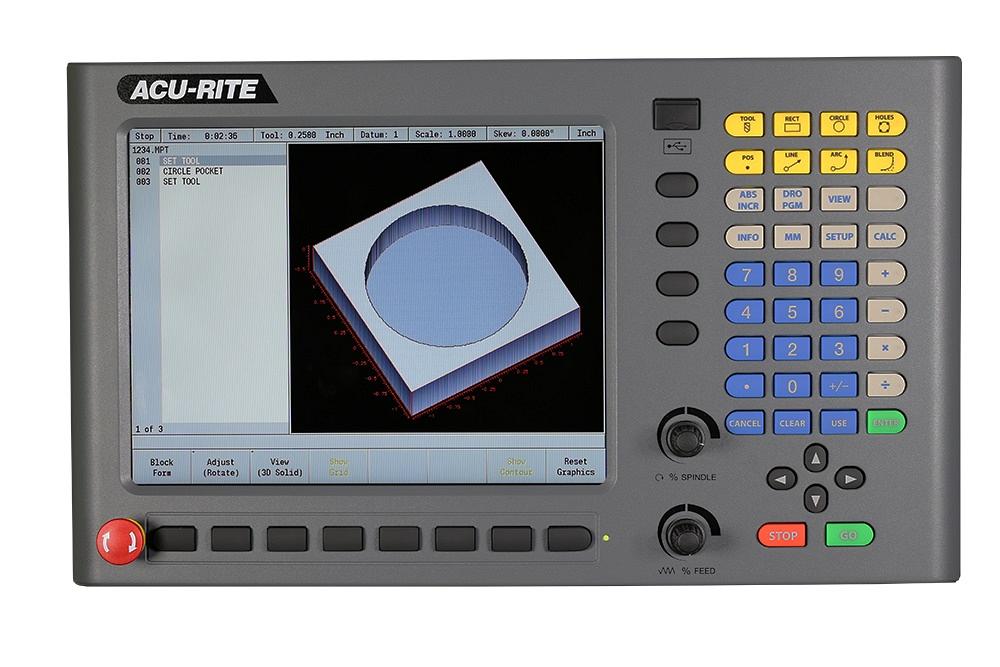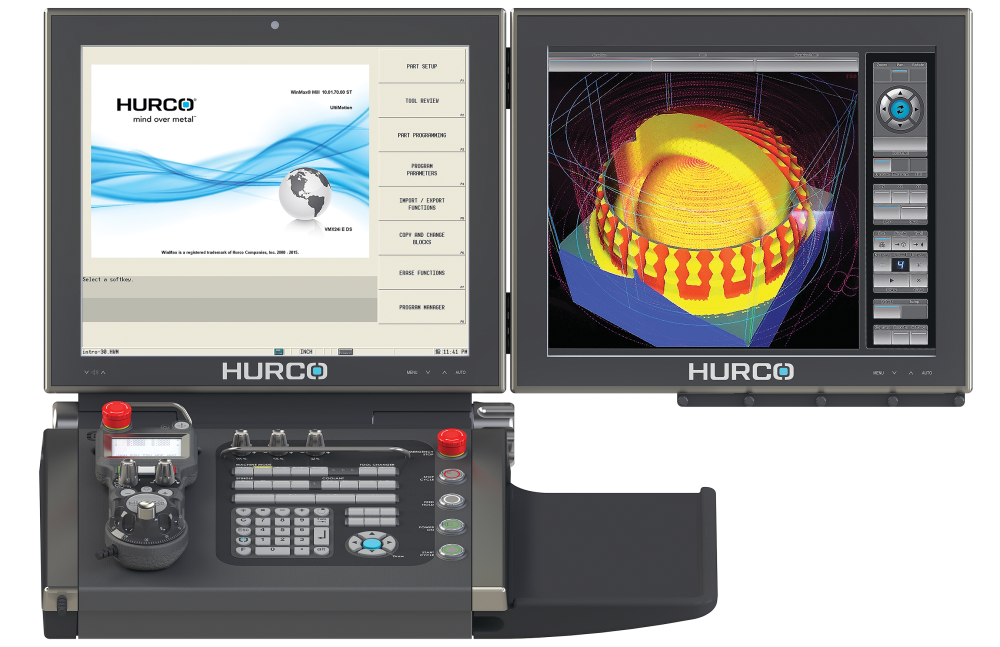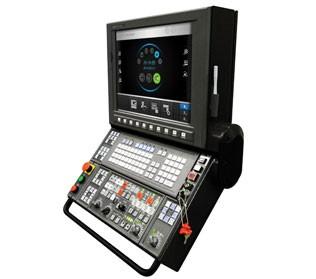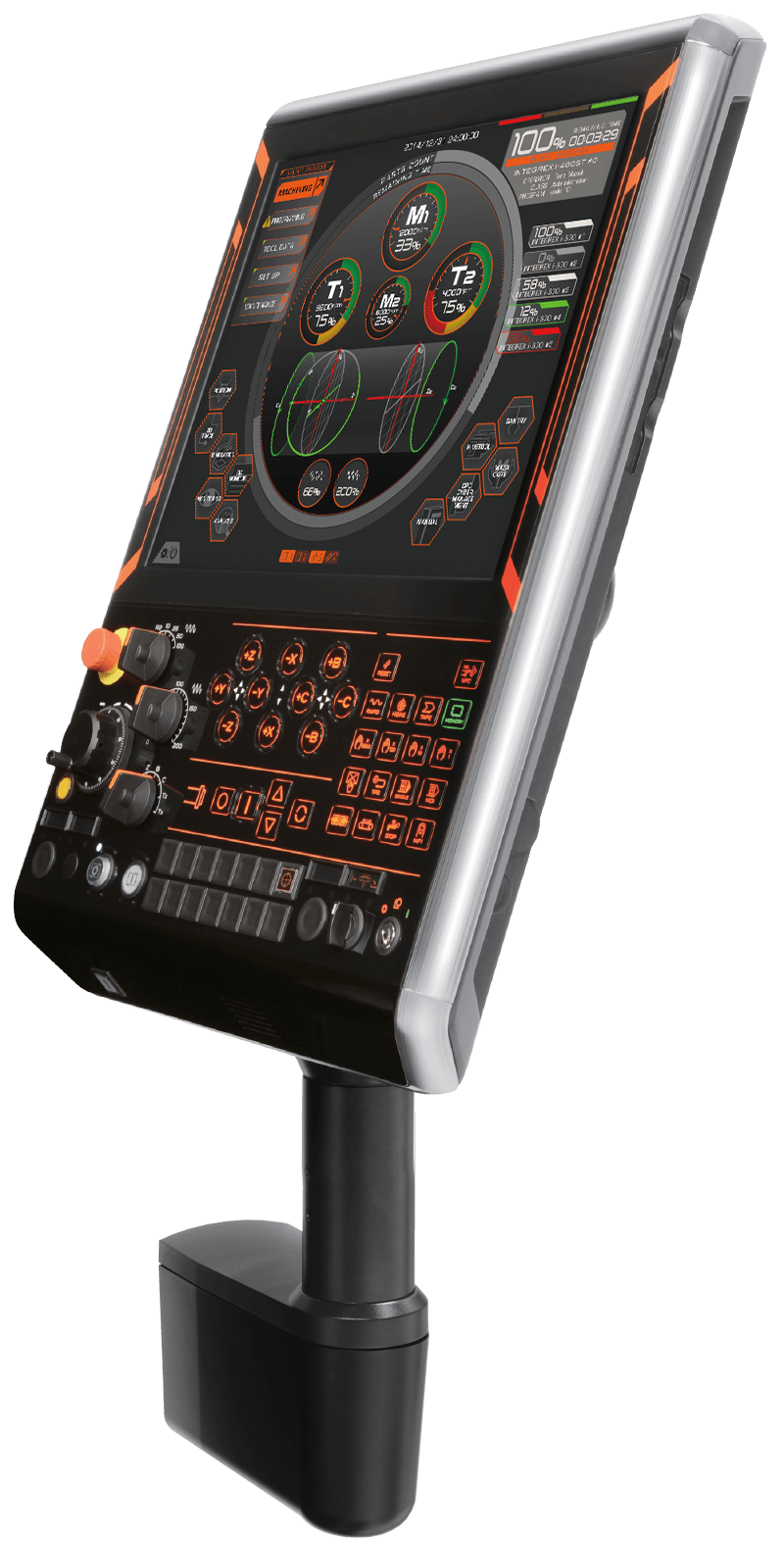- FMA
- The Fabricator
- FABTECH
- Canadian Metalworking
Machine Tool Controls
Reducing cycle times and increasing productivity.
- By Nate Hendley
- January 4, 2016
- Article
- Metalworking
A series of new or newly updated machine tool controls promise to make machining more productive and easier for operators in firms large and small.
“Shops of all sizes are continuously looking for ways to monitor their shops more effectively…because, if you can’t measure it, you can’t manage it,” notes Mike Cope, senior product technical specialist at Hurco Companies, Inc., of Indianapolis, Indiana.
Cope offers a forecast of where machine controls might go in the years ahead.
“I think we will see new products becoming available in the future that will allow shop owners to monitor everything from something like a ‘master console’. We already see this beginning with third-party software like MT Connect, and even from machine tool builders like Hurco, with UltiMonitor. Both of these are examples of software that can allow the user to log on, via the Internet, and monitor what is going on in his shop ‘real-time’,” he says.
Ray Buxton, general manager at Mazak Corporation Canada in Cambridge, Ontario, cites “digital integration” as the wave of the future.
“Mazak is working with companies like Cisco and Memex to develop complete digital integration in factories. I don’t think this will be limited to just big plants. This emerging technology—some call it “The Internet of Everything”—will link machines, ERP systems, scheduled and predictive maintenance and customers directly with each other for real time sharing of information,” says Buxton.
As for the present, here’s a look at what’s new and/or noteworthy in machine tool controls:
Heidenhain
The ACU-RITE MILLPWRG2 CNC (Computer Numerical Control) is intended for knee and bed-type mills.
“MILLPWRG2 is a simple conversational 2X or 3X control / 3X readout system for a manual knee or bed type milling machine that can be retrofitted to an existing machine or purchased on a new machine from a machine tool builder. MILLPWR G2 provides the capability to make an operator more efficient and productive,” explains John Parker, product manager, Heidenhain Corporation, Jamestown, NY.
MILLPWRG2 has 3D contouring capabilities and an operating console featuring a 12.1 inch flat panel, colour LCD display, colour-coded keypad and USB and remote stop/go pendant.
ACU-RITE is the name of a brand of products offered by Heidenhain.
As to what exactly MILLPWRG2 does, Parker says the control “has built in can cycles for simple line, arcs, holes and pocket routines. It also allows programs to be imported such as .DXF files and G-Code programs.”
On top of that, MILLPWRG2 is user-friendly.
“After installation has been completed with minimal start up training, parts are typically being made within a few hours,” says Parker.
Heidenhain recently added an optional AMIG2 console to the control.
“The AMI (auxiliary machine interface) provides additional I/O functionality for machines that require spindle control integration for spindle speed, to control coolant pumps, automatic oilers, indexers, etc.,” says Parker.
Hurco
Introduced earlier this year, the MAX5 control “offers more features and benefit to the user than any other Hurco control in the past,” says Cope.
“The MAX5 control is a newly designed control console that is present on all new Hurco machines—both mills and lathes. For the most part, the software and control capabilities haven’t changed, but there are many new useful operator features on the MAX5 console, such as larger 19 inch high resolution monitors, retractable QWERTY keyboard tray, operator shelf for mouse or notepad, flip-out hook mounted on the side of the control for hanging tools, etc.,” explains Cope.
A newly designed remote jog unit with touch screen “allows the operator to remotely switch between part and tool setup modes. An updated graphic user interface allows the operator to quickly switch between regular graphics, large digital read out (DRO) with smaller graphics, or larger graphics with a smaller DRO readout,” he continues.
MAX5 has AdaptiPath, a conversational pocketing feature used in CAD/CAM packages that boosts metal removal rates, reduces cycle time and enhances tool life. AdaptiPath also creates a smooth tool path motion, controls chip load and provides constant tool engagement.
Cope was asked if increased productivity is the main benefit from using MAX5.
“Yes, you could say that. The main focus for the design of the MAX5 console was to update the look and ergonomics of the Hurco control, as well as provide the user more features that can assist them in faster job setups and overall machine operation,” he states.
In addition to being ergonomically-friendly, MAX5 is also relatively simple to master.
“The control is very easy to navigate and use,” says Cope.
Siemens
Siemens rolled out the latest Version 4.7 of the Sinumerik Operate user interface. The company focused on improving the multitasking machining.
Sinumerik Operate and the Sinumerik 840D sl CNC control combine several machining technologies such as turning, milling and drilling, as well as workpiece and tool measuring on one machine tool. This ensures the complete machining of highly complex workpieces. With its cross-technology, standardized and intuitive look-and-feel Sinumerik Operate supports the user in performing everyday tasks.
Sinumerik Operate Version 4.7 includes extended setup and manual modes (JOG), which now interactively support the user when setting up milling-turning machines. There is also a new measuring function for approached turning tools. In addition, the workpiece measurement has been improved, now enabling the user to easily check and specify the workpiece zero on the component.
Makino
Makino hasn’t fully rolled out its new Professional 6 (Pro6) control but has provided some background details about the new offering.
Pro6 is designed “to enhance the operator’s experience and improve the productivity of the machine. If [the operator is] more effective at the machine he’s going to get more output,” says Mark Rentschler, director of marketing at Makino in Mason, Ohio.
Pro6 features touch screen commands that resemble Internet web browser controls. New functions include Geometric Intelligence (for 2D corner control), optimized canned cycle indexing, micro-reverse filtering and vibration suppression. Pro6 also offers MDI recall of the past 20 inputs and three GB of memory for program and subprogram storage with an option to expand to 20 GB
“The Pro6 control really takes a logical flow for the operator of the machine and helps him and guides him and provides a lot of useful information in his control process and the machining process. Plus there’s some new features that really help organize cutting data, tooling data, programming information and the ways in which you can operate the machine more effectively,” states Rentschler.
Currently only available on certain select Makino machine tools, Pro6 will be widely rolled out in the near future.
Okuma
Okuma is currently rolling out OSP suite, an open architecture CNC system, on new machine tools.
“Okuma’s OSP suite is the newest generation of Okuma’s intelligent technology. This control platform is centered on intelligent technologies and provides users with a pleasing operating interface, a customizable layout and easy to use applications at your fingertips. OSP suite achieves shorter cycle times, improved lead times and enhances productivity, while realizing optimum machining conditions,” says Brad Klippstein, controls product specialist at Okuma America Corporation, in Charlotte, NC.
OSP suite works only with CNC machines. It is a stand-alone platform that controls a single machine and is user-friendly.
“OSP suite’s easy to use operations takes very little time and effort to learn. The intuitive design features allow users to quickly learn the functionality of the key features, widgets and settings,” states Klippstein.
FANUC
FANUC America Corporation of Hoffman Estates, Illinois, introduced the new Series 0i MODEL F at IMTS last year, the latest control in the company’s Series 0i CNC.
The Series 0i MODEL F offers a 15 inch display, I/O Link i, FSSB high speed rigid tapping, function for loader control, tolerance control, axis name expansion, program folder management, quick program restart, flexible path axis-assignment, multi-path PMC function, ladder dividing management, EtherNet/IP and PROFINET.
“The FANUC Series 0i MODEL F is designed for high-performance commodity machine tools, from simple entry level, 2-axis CNC lathes to multi-axis turning centers with C-axis/Y-axis and live tooling and dual path, dual spindle turning centers, from entry level 3-axis milling/drilling machines to 4-axis machining centers, and other applications including features for grinding, punching and more,” says Mark Brownhill, program manager, at FANUC America.
The FANUC Series 30i/31i/32i MODEL B, meanwhile, “is designed for the most demanding applications (32 axes/10 paths and 5-axis+ simultaneous interpolated axes). It can be highly customized and optimized to meet the machine tool builders’ exact requirements for their application. Common applications include 5-axis machine (31i MODEL B5) and mill-turn applications, dial-index and emerging technologies (additive, tape laying etc). Each path can be turning or 3-5 axes milling,” continues Brownhill.
Mazak
Mazak released the SmoothX CNC, part of the company’s Smooth Technology platform, at IMTS 2014.
“SmoothX is more than a CNC control upgrade. It is a fundamental control change for the machine. In many cases the machine design had to be upgraded to support the capabilities of this control. When we introduced SmoothX we changed encoders to 64 million pulse per rev resolution, we changed motors and drives and of course introduced the very powerful touch screen control,” says Buxton.
According to Mazak, SmoothX CNC’s processing capability is four times faster than its CNC predecessors.
“We have conducted tests on customer parts and seen dramatic reductions in cycle time. We demonstrated an example of this at CMTS. There are very many improvements with this control, one of the main ones being processing power. This enables the coordination of axes (especially rotary axes) to be done much faster enabling constant cutting speeds in tight corners and eliminating undercutting,” explains Buxton.
In addition to “being the fastest control available, SmoothX is extremely user friendly ... while of course SmoothX is designed to handle EIA/ISO input from third party software programs like Mastercam, Powermill etc., it also includes the option to program in Mazak’s Mazatrol intuitive programming language,” he continues.
“Our plan is that within the next 18 months, we will expand the Smooth platform across all of our 350 different machine models. There will be three variants of Smooth control: SmoothX, SmoothG and SmoothC. Each one of the controls has somewhat different capability and aligns with machine models of differing complexity,” says Buxton.
About the Author
subscribe now


Keep up to date with the latest news, events, and technology for all things metal from our pair of monthly magazines written specifically for Canadian manufacturers!
Start Your Free Subscription- Industry Events
MME Winnipeg
- April 30, 2024
- Winnipeg, ON Canada
CTMA Economic Uncertainty: Helping You Navigate Windsor Seminar
- April 30, 2024
- Windsor, ON Canada
CTMA Economic Uncertainty: Helping You Navigate Kitchener Seminar
- May 2, 2024
- Kitchener, ON Canada
Automate 2024
- May 6 - 9, 2024
- Chicago, IL
ANCA Open House
- May 7 - 8, 2024
- Wixom, MI
























